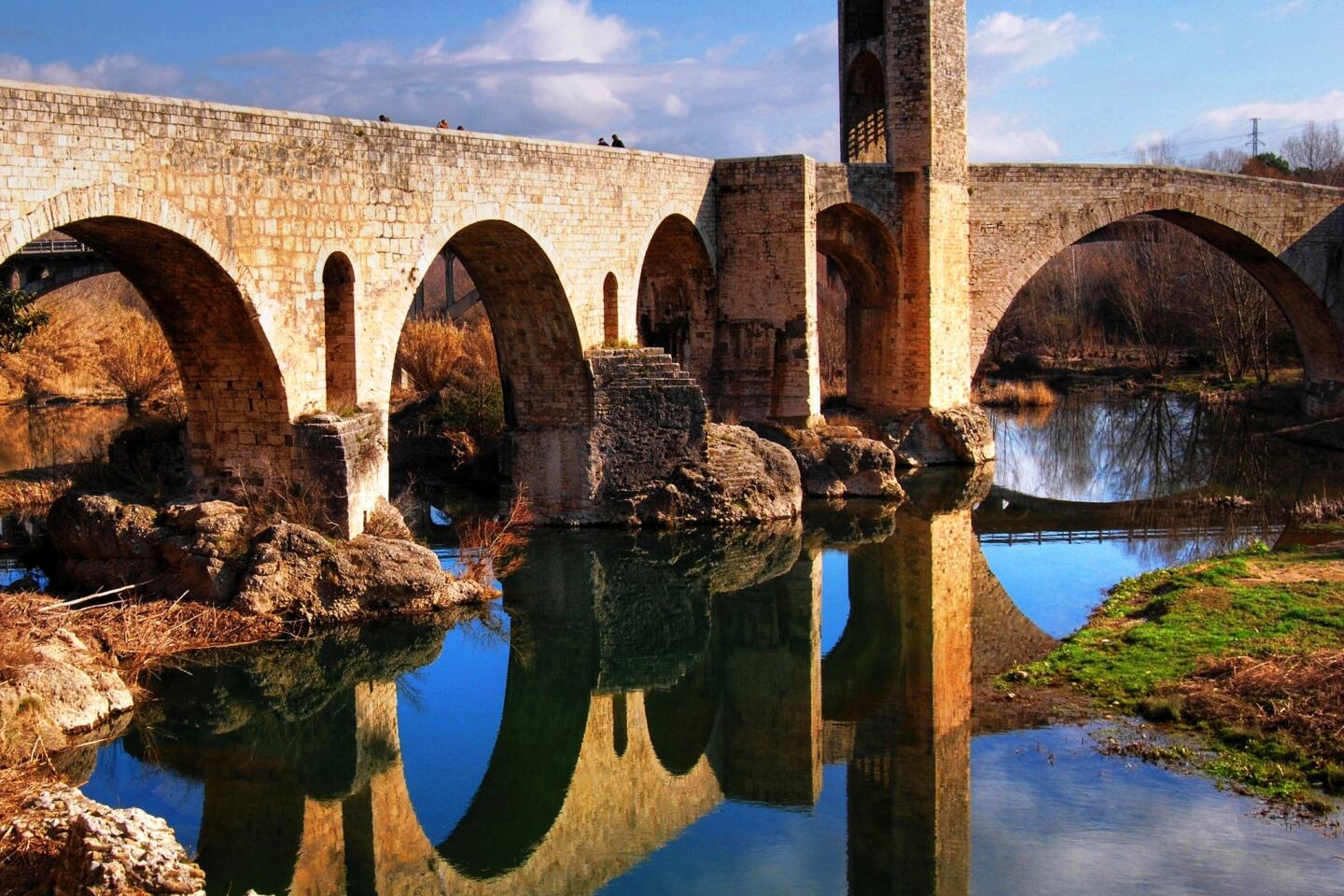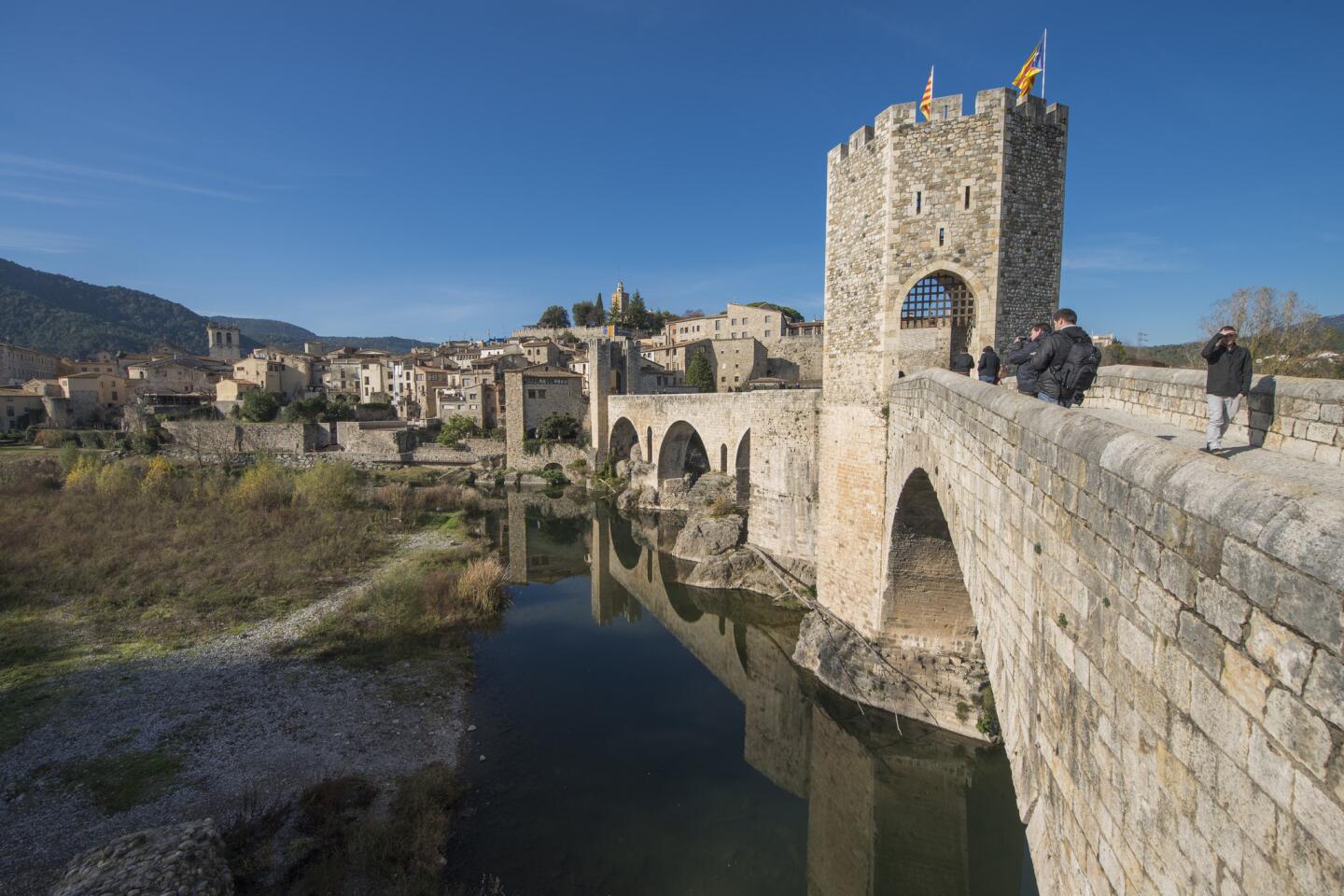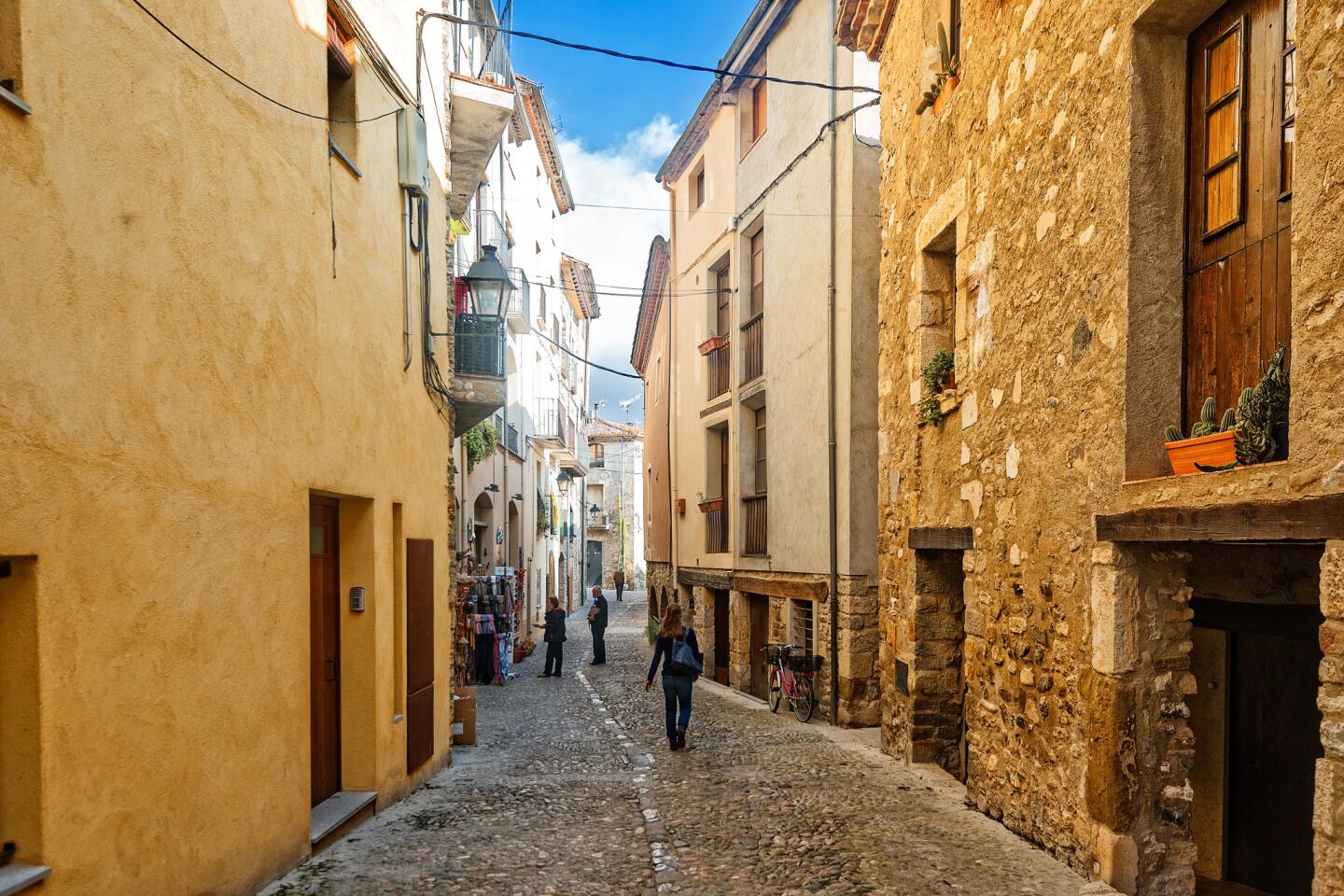BesalĂș, the most interesting Spanish village youâve never heard of
Reporting from Besalu, Spain â BesalĂș may be the most interesting Spanish village youâve never heard of. It has a cast of medieval characters youâve probably never heard of either.
There was Wilfred the Hairy, who was the count of BesalĂș (among other titles) in the 9th century. Many consider him one of the founders of a unified Catalonia. He still has fans in the regionâs independence movement.
Another hometown hero is medieval troubadour Raimon Vidal (no nickname), who demanded that audiences stay silent while a performer was on stage, a radical concept in its day.
But I digress. My husband and I traveled to Barcelona in July, before taking the train to meet a childhood friend from Los Angeles whom I hadnât seen in decades. Dvora, an ex-pat, lives in Figueres, 90 minutes northeast of Barcelona.
Figueres is best known as Salvador DalĂâs hometown and for its DalĂ Museum, in his former residence.
On the last day of a three-day visit, Dvora announced she had a treat for us: We were going to BesalĂș for the day.
BesalĂș? I had never heard of it.
Falling into a storybook
She picked us up at our hotel in her aged Nissan and we hit the road to BesalĂș, a 30-minute drive, winding our way through a Spanish countryside burned brown by a seemingly never-ending heat wave.
The enchanting historic village, so far off the beaten track that youâd probably miss it if you werenât looking for it, is well worth the trouble.
Crossing the fortified 11th century bridge to enter the medieval hamlet was like falling into a storybook. The bridge offers sweeping views of the town and the FluviĂ river below. It was easy to picture handsome knights escorting fair maidens into town, a la Disney.
BesalĂșâs narrow cobblestone streets, ancient stone buildings and Romanesque churches are charming. The churches of Sant Vicene and Sant Pere are notable; Sant Pere is all that remains of the townâs Benedictine monastery.
Also worth a peek are the Royal Curia and the hospital of Sant JuliĂ , which was built for the poor in the 12th century.
Among the historical sites is a Jewish bathhouse, or mikvah, that dates to the 1200s. It is thought to be one of only three left in Europe and anchors the remnants of the old Jewish quarter.
The Jewish population thrived until 1415, when the authorities sealed the Jewish quarter, according to a plaque at the site.
Within 20 years, no Jews remained in BesalĂș. By the end of the century, the Spanish Inquisition was going strong, and Jews and other ânonbelieversâ were forcibly driven out of Catholic Spain.
The mikvah was rediscovered in the 1960s during construction. It was originally annexed to the synagogue, its steps leading from a public square once known as the Placa dels Jueus (Square of the Jews in Catalan) to the river, which supplied fresh water for the ritual bath.
Most of the synagogue is gone, but the mikvah is surprisingly well preserved, probably because of the river sand that had built up inside of it over time. There are limited visiting hours.
Photo ops at every turn
For such a small town â population about 2,400 â BesalĂș has a lot to offer, including the Museu de Miniatures (Museum of Miniatures), a small, quirky museum filled with everything from minuscule renditions of shops and hair salons to works of art so small they must be viewed through a microscope.
Bring your walking shoes; youâll get a workout from the bumpy cobblestone streets and steep stone staircases.
BesalĂș also is very photogenic; you can scamper up or down taking photos at every turn and from every angle.
Dvora and I took a break for window shopping at an enticing string of stores clustered around a lovely square.
We tried on pretty peasant blouses and dresses. (No medieval tunics for us, thank you.) She could not resist buying us matching wallets, as if we were still schoolgirls.
Lunch was at Restaurant Pont Vell, a lovely four-story eatery in an 18th century building with a great view of the river and bridge.
The three of us had glasses of Cava and dined on cannoli with purĂ©ed cod in bĂ©chamel sauce, ravioli and the restaurantâs signature dish, sweet-and-sour rabbit, while watching the Visigoth invaders (tourists) pose for selfies on the bridge. Note: Youâll be hiking on steep steps inside the restaurant (see: walking shoes).
The only thing missing was a medieval troubadour playing softly in the background. Raimon Vidal, phone home. We miss you.
If you go
THE BEST WAY TO BESALĂ, SPAIN
From LAX, Norwegian offers nonstop service to Barcelona, and United, Air Canada, Delta, American, KLM, Air France, Lufthansa, Air Berlin, Iberia, British, Aer Lingus and Alitalia offer connecting service (change of planes). Restricted round-trip fares from $1,163, including taxes and fees.
BesalĂș is an 80-mile drive from Barcelona, the nearest major city. We took the train to Figueres, home of the Dali Museum, which is about 15 miles from BesalĂș, and drove from there.
TELEPHONES
To call the numbers below from the U.S., dial 011 (international dialing code), 34 (country code for Spain) and the local number.
WHERE TO STAY
Els Jardins de la Martana, 2 Carrer del Pont Vell; 972-59-00-09. Small, older hotel steps from the bridge and the center of town. Doubles from about $120, including breakfast.
WHERE TO EAT
Restaurant Pont Vell, 24 Carrer del Pont Vell; 972-59-10-27. Great views from this restaurant housed in an 18th century building; choose the terrace if the weather is nice. Entrees from $16.
WHAT TO DO
Wander around and soak up the feel of being in medieval Catalonia. Check out the architecture, particularly the churches, which incorporate Romanesque and Gothic elements; the bridge that spans the FluviĂ river; and the ancient bathhouse in the vanished Jewish quarter. Thereâs shopping, and the Museu de Miniatures (Museum of Miniatures) is a hoot.
TO LEARN MORE
Instituto de Turismo de España
More to Read
Sign up for The Wild
Weâll help you find the best places to hike, bike and run, as well as the perfect silent spots for meditation and yoga.
You may occasionally receive promotional content from the Los Angeles Times.







